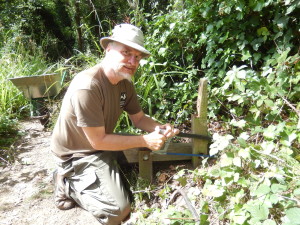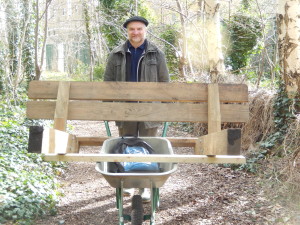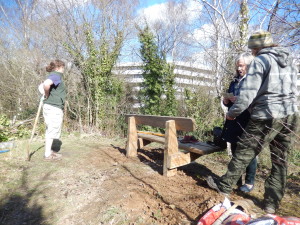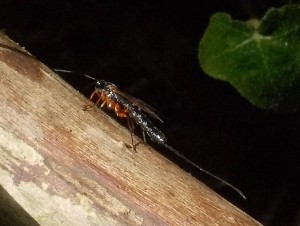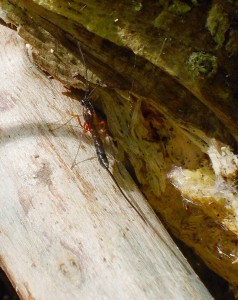The old bench by the pond had been getting very rotten and rackety, so the back, seat and one of the sides (yeah, 60% of it then) were taken off and the team had the job of putting it all back together using new wood and a bag of coach bolts.
If only things were that simple. Cutting the wood to length wasn’t too complicated. The side stretcher was angled but I managed to measure that with the saw and a pencil and marked holes from the bolts of the surviving stretcher. The bolts were too long, so they had to be cut down with a hacksaw to make it possible to use a socket spanner to tighten them.
Then we marked the position of all five timbers for the back and seat, marked the bolt holes, and drilled them. The two for the back were countersunk for the heads, and fitted to the posts. The bolts were heavier than the old ones, giving us trouble trying to tighten them in the small countersunk space available. I widened the gap with a bit of chiselling and managed to tighten the nuts using a pair of grips. The bolts weren’t long enough for the seat timbers and the thickness of the stringers so we drilled the timbers with starter holes (very narrow) and nailed them down with six-inch nails, a considerable effort. The vibration made the timbers climb up the nail, so when the nail was seemingly fully down, it in fact still had an inch to go and the timber was way adrift of the stringer. We thumped the thing down with a lump hammer and then continued tapping away on the nail with an ordinary hammer. The engineer’s maxim, ‘when all else fails, use b****y great nails’ did come to mind. It was very hot in the sunshine and we gratefully shared a thermos of iced water between us.
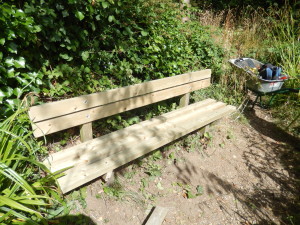
The bench actually looked quite new and professional. Of course if the old posts fall to bits, we’ll have to start over, but it* should last a few more years yet.
* It – the bench – is now officially a “Grandad’s Axe”. You know, grandad’s axe is over 70 years old, and has had seven new shafts and two new heads over the years…

